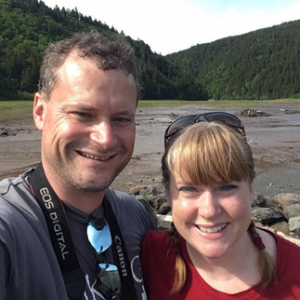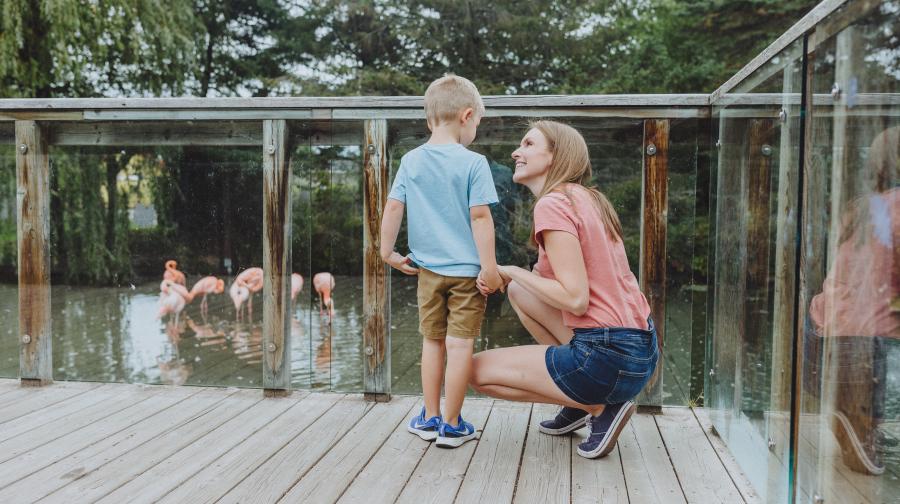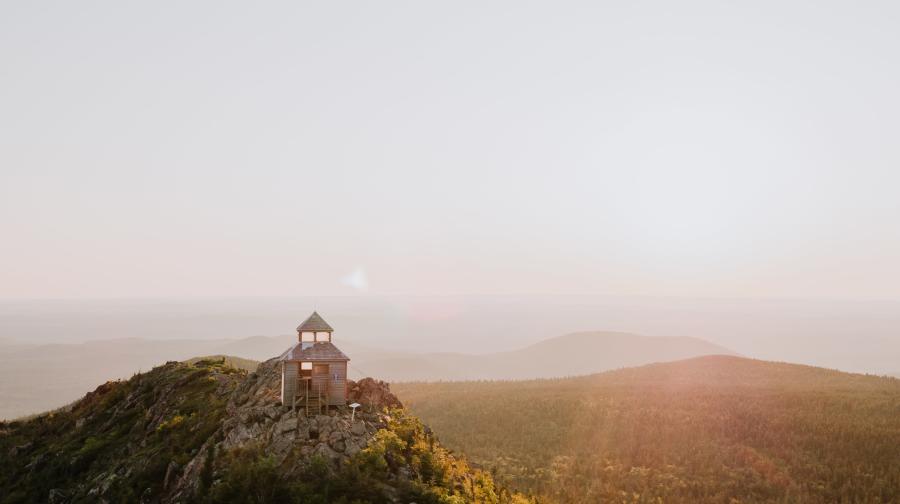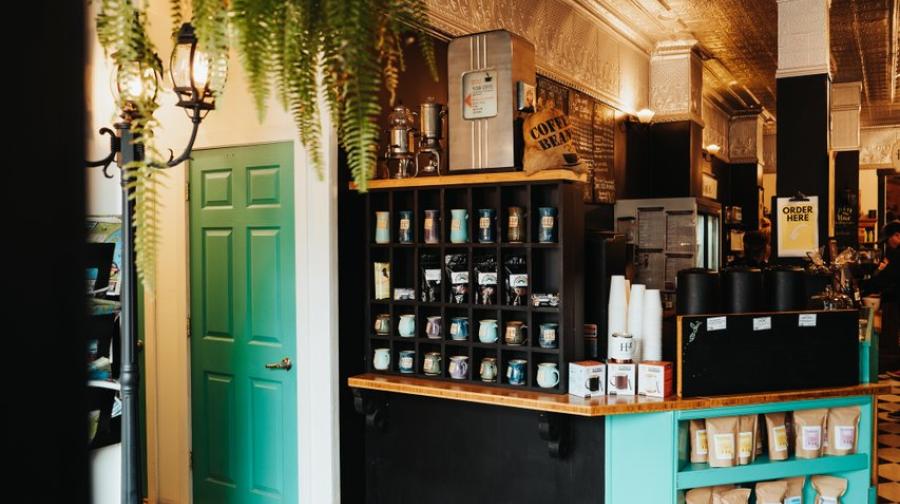Hiking NB bloggers James and Vicki Donald share their favourite winter trails and tips.
When winter comes, we have to put away our hiking boots and get out our winter boots and snowshoes. There is nothing better than the silence of the forest after a fresh snowfall, but there are some things you should remember before heading out. There are three main differences between hiking and snowshoeing: access, difficulty, and temperature.
To get to trails that don’t start on plowed roads you will either require extra snowshoeing or a snowmobile. The extra snowshoeing will increase the time and energy required to complete a trail. Snowmobile trails on the access or the trail itself usually make it easier to travel. You may not even need to wear your snowshoes but it is important to carry them just in case. A hard trail in the morning may soften up as the day gets warmer. It can be very difficult to travel if you continually sink through the snow (called postholing), especially if it’s on a packed snowmobile trail.
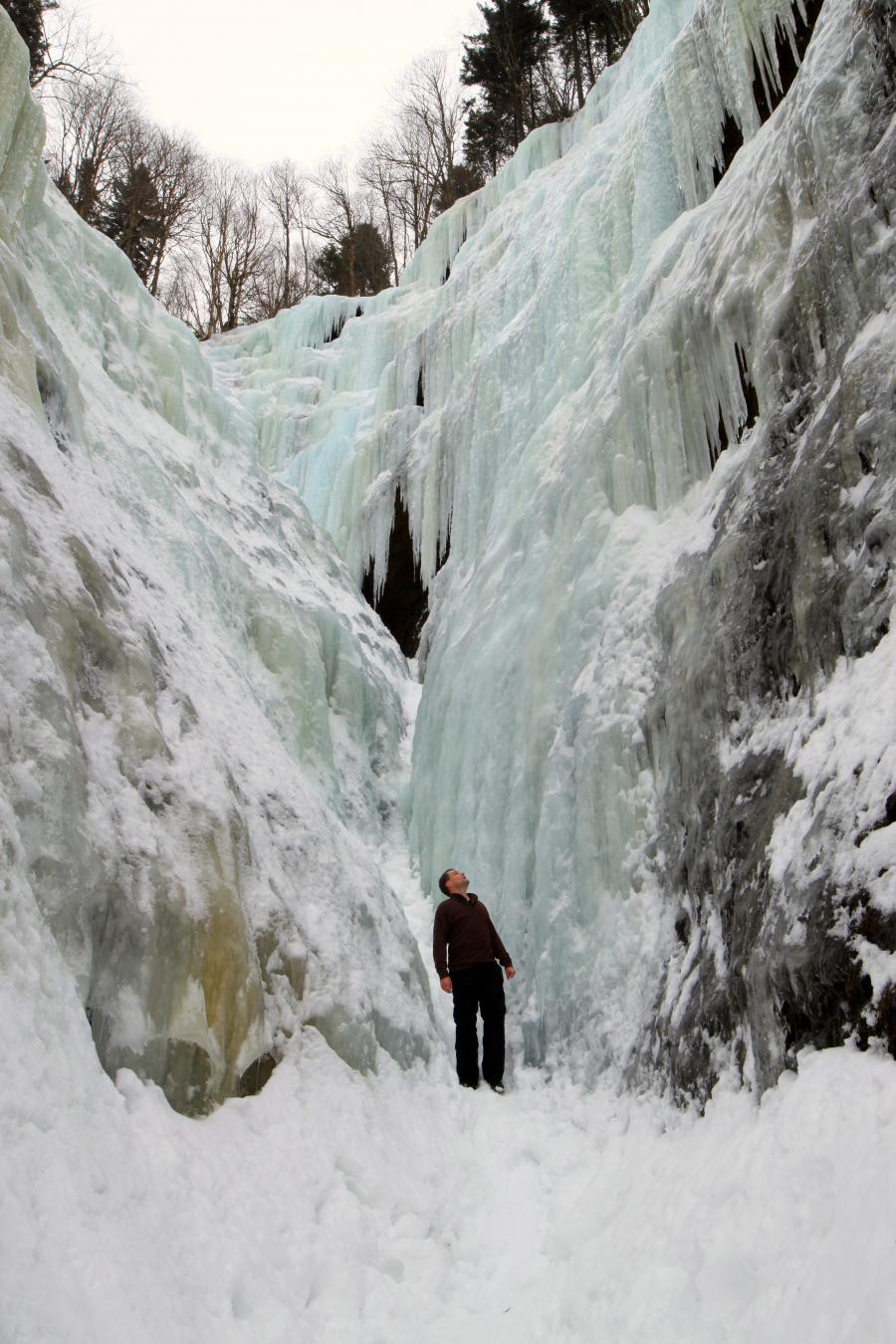
Parlee Brook Amphitheatre, near Sussex
Increased difficulty comes in two forms. A treacherous trail in the summer may become a nightmare in the winter. Also adding the weight of snowshoes, plus the weight of any snow that sticks to them, can make the trip much more strenuous than when hiking in other seasons. You will have to use your judgment on the first one. The second one just means staying in shape (sounds easy) and adjusting to different snow conditions. Another thing to keep in mind is that the days are much shorter in the winter months so give yourself ample time to get back to your vehicle before dark. And remember to also carry a flashlight just in case.
Temperatures and weather are the biggest difference in the winter. You need to dress appropriately when hiking in the summer but the addition of snow and cold temperatures makes this more critical. Dress in layers for the worst potential weather. Make sure you take into consideration that snow will melt and make you wet. This may happen when you are doing something as simple as sitting down to rest. Another issue is making sure you stay cool enough while snowshoeing so you don’t build up sweat. That sweat will turn cold fast once you stop to take a break.
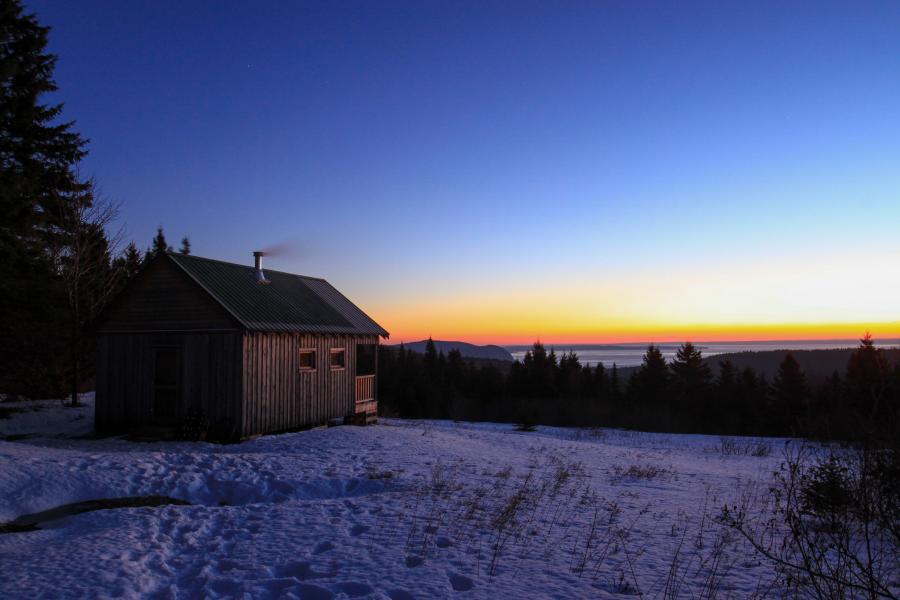
Hastings cabin, Fundy National Park
Now enough with the preamble and precautions and onto the recommended locations.
Note: The following is a list of hiking trails that can make good snowshoeing adventures in the winter. For a list of ski and snowshoe clubs that offer trails (and snowshoe rentals) that are only available in the winter check out the Hiking NB’s Recommended Places to Rent Snowshoes and Explore Trails blog post.
FUNDY COASTAL EAST REGION
Fundy National Park has several trails designated as snowshoe trails along route 114. A set of loop trails has been developed at the Chignecto Recreation Area across from the Chignecto Campground specifically for snowshoeing and cross-country skiing. If you want a real adventure, consider staying at one of the rustic cabins but prepare for cold weather. The cabins are now insulated and there is a fireplace and firewood at each.
Some trails at Mapleton Park in Moncton are usually plowed and sanded, while others are left for snowshoeing. This makes it a great place to take a walk if you forgot your snowshoes. Irishtown Park is a great place to get into the forest near the city and easily accessible. The Dobson Trail is perfect for snowshoeing. You can go all the way from Riverview to Fundy Park if you are really ambitious.

Dobson Trail winter scenery
The gate at the Fundy Trail Provincial Park is closed during the winter but the Multi-Use Trail and the road itself make a great snowshoeing trail in the west of the park near St. Martins. In the park you will enjoy many beautiful wintery views of the Bay of Fundy. The Sussex Bluffs are beautiful any time of year and the Parlee Brook Amphitheatre is an amazing valley of ice in the woods to the south of Sussex. On the way to the Amphitheatre climb up to Friar’s Nose, which is a rocky outcrop high above the Parlee Brook Valley. Another must-see is the Midland Ice Caves. The ice caves only exist in the winter months so snowshoeing is a necessity if you want to experience them. Consider going through the week or get there early to avoid the crowds.
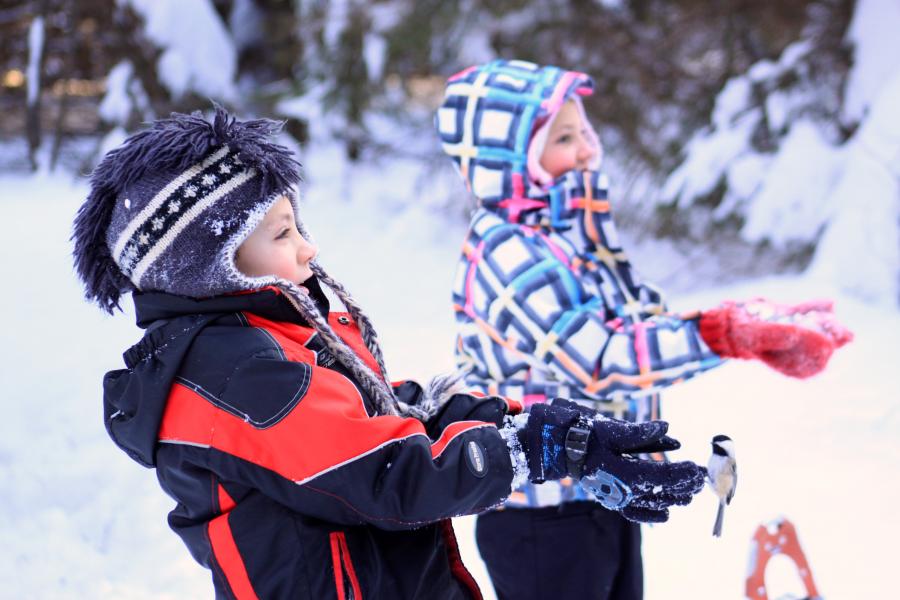
Making feathered friends on the trail
FUNDY COASTAL WEST REGION
Simpson Hill in Bayside and Chamcook Mountain in Saint Andrews make a challenging snowshoe but well worth the views at the top. Always be careful on mountain tops and stay back from cliff edges. The snow can make it difficult to know where the edge starts and ice can make it slippery.
Ganong Nature Park is a small park in St. Stephen that has several different trails to explore. The trails provide beach access and many views of Back Bay. The Marsh Trail in St. George is another good option.
At the Caughey-Taylor Nature Preserve in Bocabec you can either circle Sam Orr Pond or continue out along the coast to Berry Point. You can also explore the trails above the road that access a beaver pond and Chickahominy Mountain.
The trails on Grand Manan are mostly coastal and are treacherous and exposed. You may want to explore the inland trails during the winter months. The Red Point Trail at the Anchorage Provincial Park and the section of the Lighthouse Trail from the Whistle to the junction with Indian Beach would make great options. Campobello Island has several inland trails that access the shores of the island that would make great adventures.

French Fort Cove, Miramichi
MIRAMICHI RIVER VALLEY REGION
Fall Brook Falls is beautiful in the winter. The main road is usually plowed but you have to walk into the trail from the main road. The good news is that the road and trail are usually well-packed from snowmobile traffic. We have snowshoed to Beaubears Island several times. You need to be extremely careful crossing the ice. Not only is it salt water but it’s also tidal making the ice conditions quite unpredictable. We have snowshoed several times on the Millbank Nature Trails, Morrison Cove Trails and at French Fort Cove, all in the City of Miramichi.
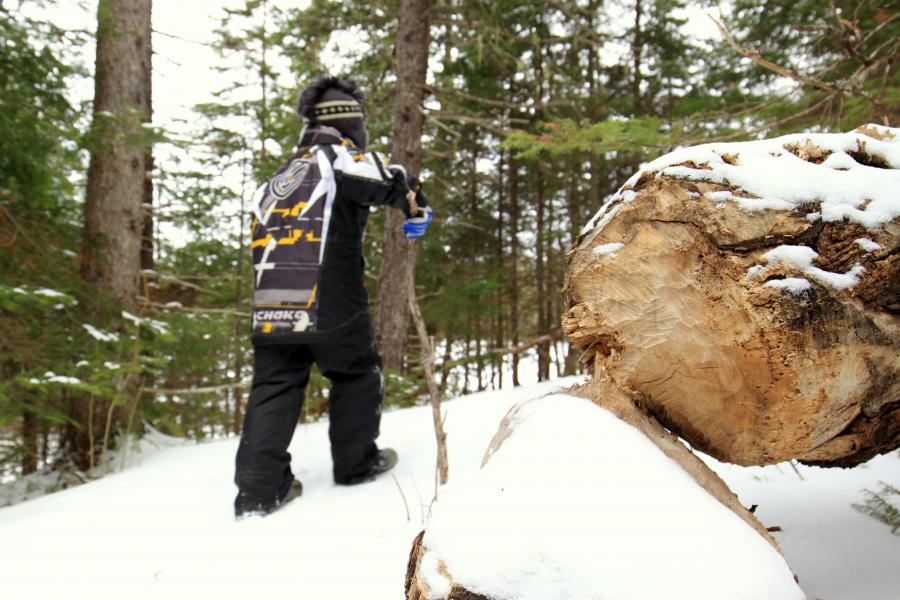
Kouchibouguac River Trail
ACADIAN SOUTH REGION
The trails at Cape Jourimain are not maintained during the winter, but they are still accessible to hike, ski or snowshoe. The Claire Fontaine, Osprey and Kouchibouguac River trails are your best options at Kouchibouguac National Park. Accessing the Kouchibouguac River Trail is best done by crossing the walking bridge that crosses the river on route 117 (where the Middle Kouchibouguac to Loggiecroft Trail crosses the Kouchibouguac River). If you don’t have your own snowshoes you can rent them at the Pijeboogwek Shelter across from the visitor centre. From here there is a snowshoe trail that travels through the woods adjacent to the ski trail and accesses the Kouchibouguac River Trail. You can also explore the many cross-country ski trails that loop around the interior of the park. There are other winter activities to enjoy in the park. The road to the beaches is not plowed so access to that part of the park is difficult.
The trails in Baie-Verte, Port Elgin, Shediac and Cap-Pelé would all make great places to explore on snowshoes.
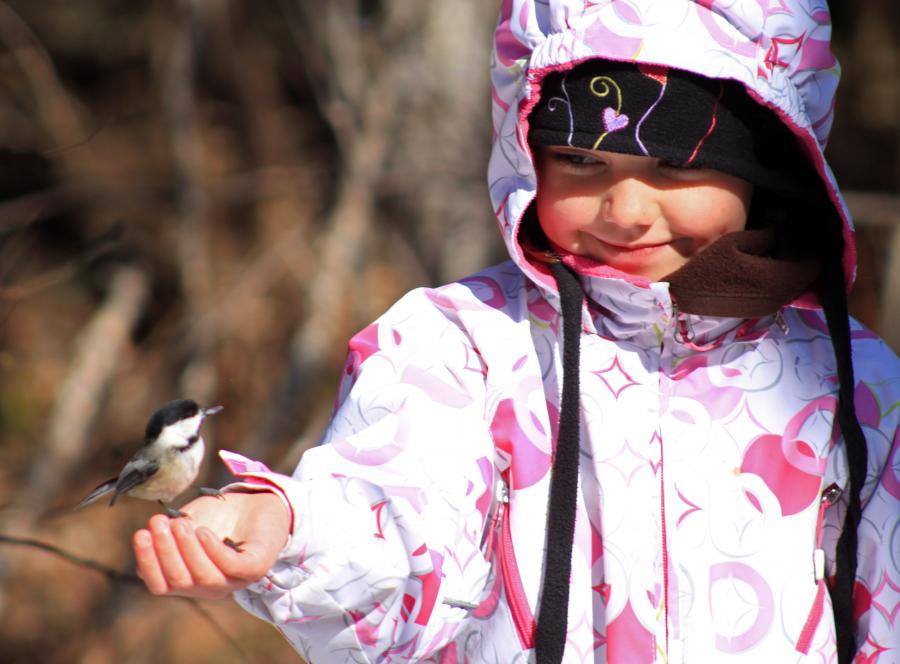
Daly Point Nature Reserve, Bathurst
ACADIAN NORTH REGION
More than 100 km of the newly upgraded Nepisiguit Mi’gmaq Trail are accessible in the winter, all the way from Daly Point Nature Reserve (east of Bathurst) to the woods near Popple Depot, west of the city. The trail can be accessed from Green Belt Lane in Bathurst, near the bridge at Middle Landing, from the bridge north of Heath Steele Mines, and from near the Governor’s Lodge at Popple Depot. The section from Green Belt Lane to Middle Landing is the most popular so will usually be the most packed for easy snowshoeing. These sections make great options for a day of snowshoeing in the woods. They are also remote so as always you should let someone know where you are going and when you plan to be back.
If you are looking for some shorter trails in the Bathurst area then Daly Point Nature Reserve makes an excellent place to snowshoe. This is where the chickadees will come and land in your hands. The trails along the bay are nice but your chances of finding the Chickadees is better on the inland trails. The park is a popular place in the winter so the trails are usually quite packed for easy snowshoeing.
Atlas Park in Pointe-Verte and Ile-aux-Foins Park in Neguac are also easily accessible and can potentially make great places to explore. The access road to Atlas Park is not usually plowed so be careful parking along the road. The access road to Ile-aux-Foins Park is usually plowed to the start of the long narrow island.
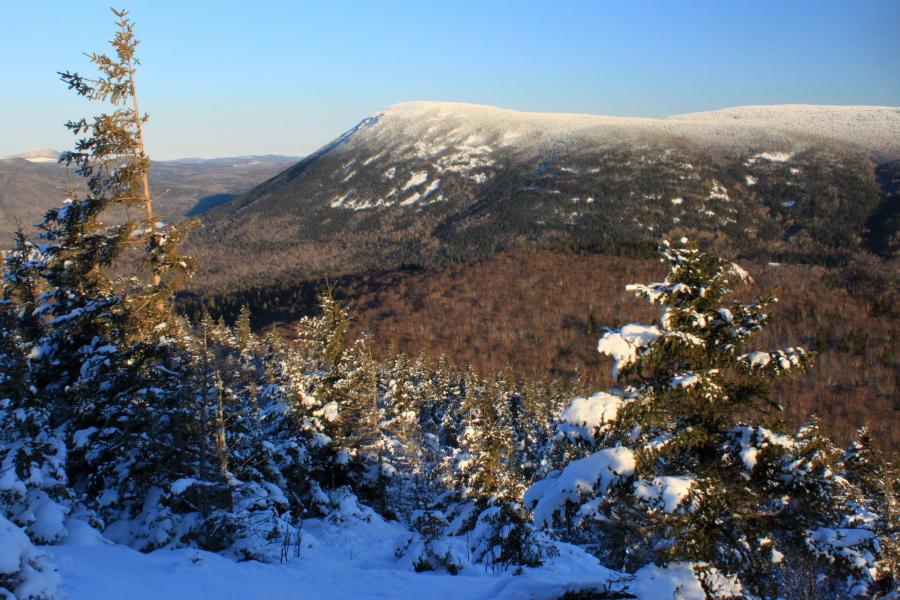
Mount Sagamook from Mount Bailey, Mount Carleton Provincial Park
APPALACHIAN MOUNTAIN RANGE
In the winter months, Mount Carleton Provincial Park is open for day use and the road is plowed to Mount Bailey. Mount Bailey makes a great adventure in the snow. The views from near the top of Mount Bailey are spectacular looking across at the Mount Carleton Plateau. From here you can see the rocky outcrops on Mount Sagamook and the fire tower on the top of Mount Carleton. When you are done make sure you warm up in the beautiful new lodge on the banks of Nictau Lake.
In Sugarloaf Provincial Park, the Sugarloaf Mountain peak is a sporty but doable climb in the winter. Snowshoes may be difficult on this steep trail and ice grippers for your shoes might be a better option. The Terry Fox Trail that circles the base of the mountain is a popular trail for an easy winter stroll. The White Pine Trail just behind Sugarloaf Mountain, as well as the Montagnards trail network, are well used and usually packed for snowshoeing.
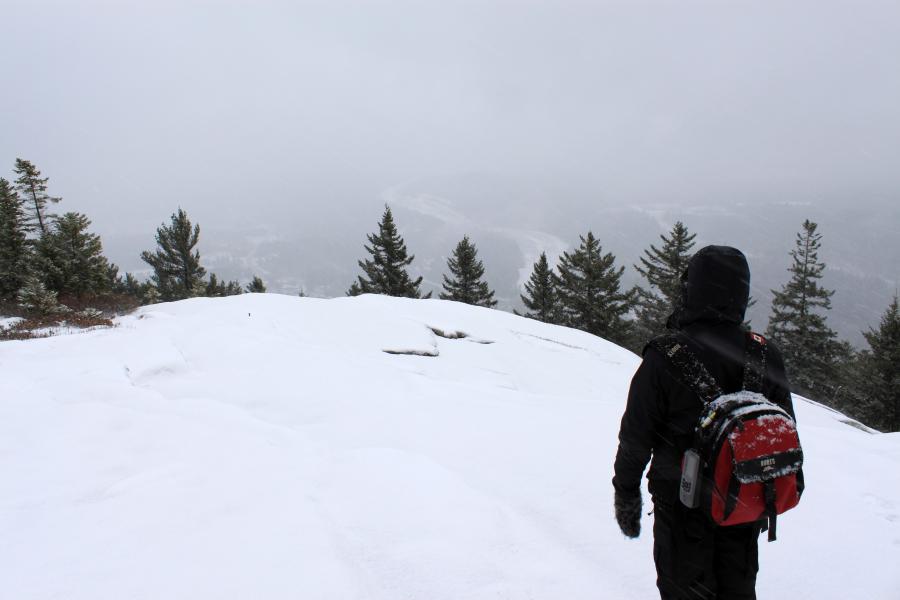
Mount Douglas Bald Trail, Welsford
LOWER ST. JOHN RIVER VALLEY REGION
Ayers Lake is a great place to snowshoe. The snowshoe in from the pavement adds an additional 4 km to the trip but the road is usually packed by snowmobile traffic. Howland Falls in Bear Island is just off the Scotch Lake Road so easily accessible, but be careful of conditions. Sometimes the packed, steep trail down to the falls becomes ice! Giant icicles form on the rock walls at Chimney Rock but it can be difficult to access depending on what is plowed. The main gravel road to Deersdale is usually plowed. It’s a long walk in from there but well worth it. I have taken the kids snowshoeing up Currie Mountain in Douglas several times.
Dunbar Falls in Durham Bridge, Coac Falls near Nackawic, Welsford Falls and Hayes Falls on the Maliseet Trail in Meductic can all be reached in a less than 5 km hike. I like to visit the waterfalls near the start or the end of the season when they aren’t completely covered in ice and snow. One time I took the kids to Hayes Falls and they were fascinated by a group of ice climbers climbing the falls.
Any of the trails in and around Fredericton are usually either plowed or packed from foot traffic. Snowshoes are usually not required. Once you get outside the city on the old rail lines you can find some great snowshoeing along the beautiful St. John and Nashwaak rivers. The UNB Woodlot (behind Costco) is a great place to explore in the winter and is accessible from several places along the New Maryland highway, Bishop Drive or Knowledge Park Drive. Killarney Lake and Odell Park are also interesting places to explore in the winter.
Mactaquac Park is perfect for snowshoeing with all its forest and beaver ponds. They have also been grooming their trails in recent years. The Friends of Mactaquac Park group have snowshoes available to borrow at Mactaquac Lodge. This is great if you want to try out snowshoeing but have not yet purchased your own pair.
Deer Park in Oromocto would make a great place to explore the St. John River floodplains. Woolastook Park is usually quiet in the winter and is easily accessible. The trails in Nackawic and McAdam are all easily accessible with beautiful views. We climbed Greenhill Lake Mountain a few years ago with the kids and they had a great time.
The Mountain Bike Minto Trails are an amazing place to mountain bike and hike in the summer and a great place to fat bike and snowshoe in the winter. The old coal mining site makes it a unique landscape to explore any time of the year.
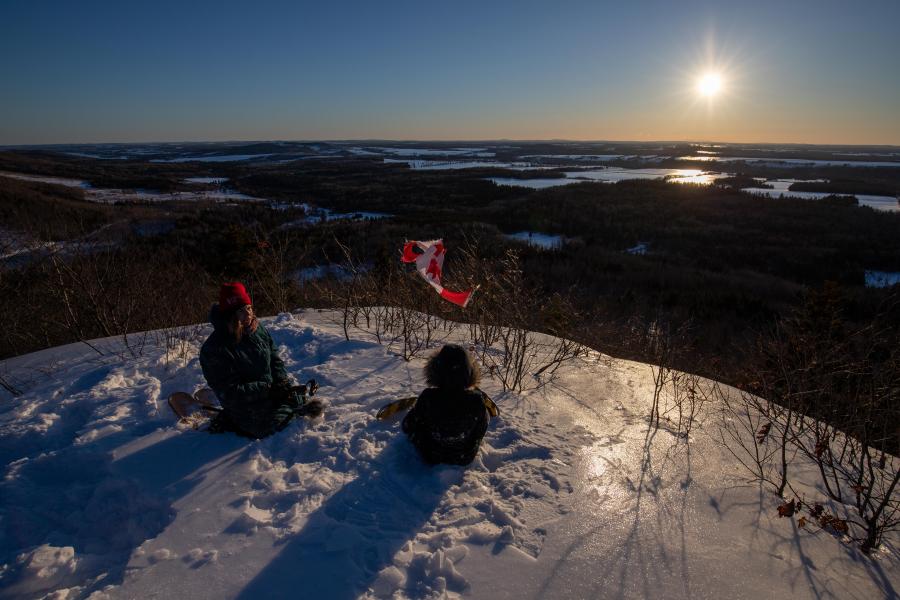
The Pinnacle Trail, Florenceville-Bristol
UPPER ST. JOHN RIVER VALLEY REGION
Le Prospecteur Trails in Edmundston would be steep in places (mostly closest to the city) but would still make good snowshoeing. In Plaster Rock (Tobique Valley), the Tourist Park is an excellent place for snowshoeing. We have snowshoed several times at the Meduxnekeag Nature Preserve. I would stay away from the green and purple trails because they can be quite treacherous (unless that’s what you are looking for). I wouldn’t take young kids on the black trail either. We learned that one the hard way. The rest of the trails at the parks would be great for snowshoeing.
The Shiktehawk Stream Trail, Moose Mountain Trail, and Robinson (Maggie’s) Falls are all easily accessible and should be checked out in the winter months. The Pinnacle in Florenceville-Bristol is a steep climb, and even more difficult on snowshoes, but worth it for the spectacular views of the Saint John River Valley.
When I started this post I thought that the list of potential trails would be short. There are many great snowshoeing destinations in the province and plenty of spots to rent snowshoes. I hope this post gives you ideas and inspiration for your own winter adventures. The winter can be a beautiful and underappreciated time to get out and hit the trails.
❄️ ❄️ ❄️❄️ ❄️ ❄❄️ ❄️ ❄❄️ ❄️ ❄❄️ ❄️ ❄❄️ ❄️ ❄❄️ ❄️ ❄❄️ ❄
James and Vicki Donald are the creators of the Hiking NB website, Paddling NB website, and the Explore Everywhere Podcast. They have hiked almost every trail in the province and share their adventures and trail information on the website, on social media, on radio and in magazines.


